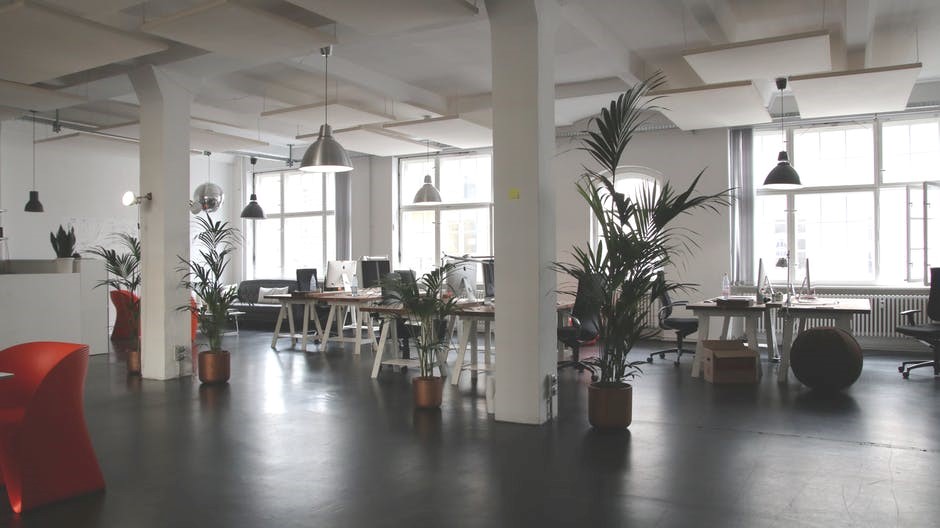Shared office space is usually seen as the model for boot-strapped start-ups and fledgling companies to find their feet among freelancers and remote workers. Yet today, the financial and cultural benefits of co-working office space are rapidly penetrating the world of large corporations and fundamentally changing office culture even at high, established levels. As the office real estate landscape is being fundamentally reshaped by shared office space, more corporations are opting for the co-working model.
Why exactly are corporations jumping into a model that was once seen as the preserve of small under-cashed companies?
Desks of Gold
For one thing, the financial and cost-saving benefits of shared office space have proved as true at the corporate level as they have for small organizations, and proved easily scalable at that. In an increasingly competitive and pricey office real estate market in many cities, collecting rent from shared workspace is analogous to leasing a studio in a wealthy townhouse, and just as lucrative. It’s simply hard to argue with numbers.
Changing ways of work are also threatening the very logic of traditional office models, and are helping push corporations toward shared workspaces. New technology and cloud computing are drawing workers out of the office more and more to work remotely or in the field, leaving their desks and other resources in the main office unused and unproductive a great deal of the time. Opening up their offices to shared workspace allows large companies to optimize for this increasing waste of unused resources.
Finally, owning shared office space instead of filling it with static staff affords corporations a built-in flexibility in their business models to downsize and grow as necessary without rolling the dice on how much office space is needed to house their operations in the future. If business picks up and more workers and staff are needed, less space can be leased out to non-company staff and increased for new hires. If a series of bad quarters or new circumstances force a reduction, the reverse can happen and more floor and desk space can be turned over to outside workers to balance the books.
Cultural Opportunity Costs
But financial and strategic incentive are not just what are drawing corporations toward offering co-working spaces. Just as important is the cultural potential built into the shared office space model. Workers tend to be happier and productive in co-working environments where they feel less inhibited and free to collaborate with one another within flexible workspaces and break areas. Younger talent too, is coming to expect these sorts of environments and can be harder to pull in with competition offering up freer work cultures.
The beauty of the co-working model is that this creativity and productivity do not just have to come from in-house operations. Co-working spaces themselves have become synonymous with entrepreneurship and creativity and this energy can flow into corporate business operations when integrated into their office space, allowing both the corporation and desk leasers to benefit one another. Allowing in non-company workers can lead to increased interactions and ideas flowing between employees and their leasing counterparts.
Opening office doors to start-ups in particular can be a particularly profitable action for many corporations and lead to partnerships or absorption of new services or technology developed by these creative and energetic companies using the space. Co-working spaces naturally facilitate these sorts of collaborations while lowering the direct involvement and risk of the host company. As technology increasingly changes the competitive advantages throughout industries, failing to open up to outside ideas and opportunities could do severe damage to large players in the future.
Is Shared Workspace the Future Corporate Model?
Quite simply, yes. Increased communications, changing working arrangements, and financial pressures are all creating a shared future for industry landscapes that fit naturally into shared work spaces. Train stations, such as Fenchurch Street Station, as well as hotels, airports and even some coffee shops are all jumping on the bandwagon and housing these entrepreneurs as they set about growing their businesses. This cost effective, non-committal and casual type of workspace which lends itself to spontaneity and serendipitous encounters is certainly a trend that doesn’t appear to be slowing, in fact its popularity is growing globally.
Collaboration, creativity, and free flow of ideas is increasingly the future of all industries and changing the office landscape at all levels. Corporations might only just be starting to dip their toes into this office model, but soon many will be diving in completely to take full advantage of the incentives offered by shared offices.
Find a Home-Based Business to Start-Up >>> Hundreds of Business Listings.

















































